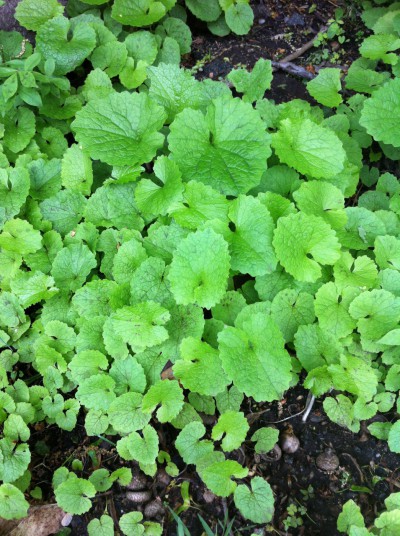 Garlic mustard is an invasive species that is thriving in Westchester. Originally brought to the U.S. in the 1700s by colonists for cooking purposes, it has spread out of control, aggressively pushing out native plants because there are no naturally occurring predators, insects, or diseases in this area to keep garlic mustard in check.
Garlic mustard is an invasive species that is thriving in Westchester. Originally brought to the U.S. in the 1700s by colonists for cooking purposes, it has spread out of control, aggressively pushing out native plants because there are no naturally occurring predators, insects, or diseases in this area to keep garlic mustard in check.
The Rye Garden Club Conservation Committee
 Garlic mustard is an invasive species that is thriving in Westchester. Originally brought to the U.S. in the 1700s by colonists for cooking purposes, it has spread out of control, aggressively pushing out native plants because there are no naturally occurring predators, insects, or diseases in this area to keep garlic mustard in check.
Garlic mustard is an invasive species that is thriving in Westchester. Originally brought to the U.S. in the 1700s by colonists for cooking purposes, it has spread out of control, aggressively pushing out native plants because there are no naturally occurring predators, insects, or diseases in this area to keep garlic mustard in check.
How to Identify It
This time of year, garlic mustard shows a cluster of small white flowers, and can be spotted in areas where native vegetation has been disturbed and in shaded areas. It often grows roadside and along the edges of yards and wooded areas. A bi-annual plant, the first year it grows as a mass of tiny leaves in a rosette and stays green through the winter. The second year it is a small, single-stalked plant with triangular leaves. Its spring flowers develop into long, thin seedpods. When you crush the leaves at any stage of growth, they smell of garlic.
What You Can Do
If you spot garlic mustard, pull it up out of the ground, roots and all. It is easy to do. Now is the time to do it — before it goes to seed — to limit its spread. Discard the plants in your garbage, not with your curbside collection yard waste or on your compost.
Plant native plants in the environments where garlic mustard is known to thrive, and this invasive will have no room to grow on
your property. If you have done work on your yard, you are especially vulnerable, as it easily takes root in disturbed soil. Prevent garlic mustard from coming to your yard by planting native plants as soon as possible.
There are countless native plant alternatives for moist, shaded areas. For shrubs, choose spicebush, witch-hazel, or pinxter and swamp azalea. Plant ferns such as maidenhair, cinnamon, interrupted, Christmas, marginal shield, and lady fern. For flowers, plant columbine, white wood aster, hepatica, trillium or creeping phlox. All of these native plants will be easy to maintain, look lovely and will give garlic mustard no room to take root on your land.















